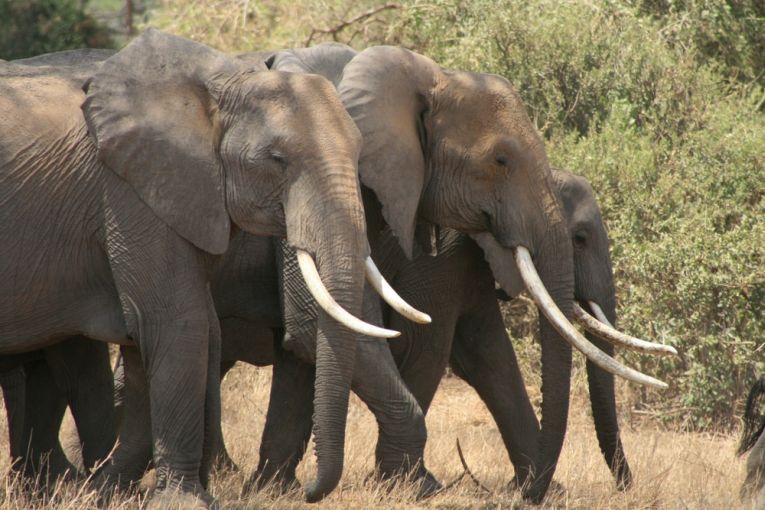In the Mount Kenya forests, Mountain Bull was slaughtered by poachers last month. Now the largest elephant in the world, Satao, has been taken from his family and all the rangers and others who loved and respected his enormous importance and significance. Weighing at least 7 tonnes and 4 metres high, he lived for more than 50 years in Tsavo and learnt that his great tusks were important enough to hide them behind bushes and trees. In other words, he knew that terror was stalking him and his herd. With the elephantine intelligence of Loxodonta africana, it would be impossible for him not to know. The poachers responsible were probably the ones who tried to kill him with poison arrows in March. He survived and his wounds repaired but the Chinese-inspired ivory trade must have found him a must-have target. The effect is not to be underestimated. When he recovered, the organisation Save the Elephants received more than 200 Get Well Soon cards!
Now we have to suffer the distress and sorrow that an elephant feels when another dies. It was left for the Kenya Wildlife Service (KWS) to announce the news on 12th June, but rangers knew a body in a swamp was the carcase of Satao. Richard Moller of the Tsavo Trust was not the only one in tears, as everyone realised that KWS's 24/7 security had failed. Kenya's iconic elephant was supposed to be the 98th to die this year from the poacher's bullet. But those official figures are wrong. Many more seem to have died in the Masai Mara, Samburu, Lota Hills, Marsabit, Mount Kenya, the Aberdares and the Shimba Hills as well as Tsavo. Perhaps as many as 1000 have been killed, but KWS need to reduce fears of elephant exploitation when in fact they should be advertising the great need for resources, including firepower.
There is a large elephant poaching crisis, as there is elsewhere, but officials find it impossible to declare that. Money for drones and army help is forthcoming throughout Africa, but a push against the killers is essential. The UNEP General Assembly begins its very first session on 24th June, so the Guardian (in the form of blogger, Paula Kahumbu) is calling for an environmental moment in memory of two very large and very significant individuals who are far better than the humans who kill their kind for profit.










